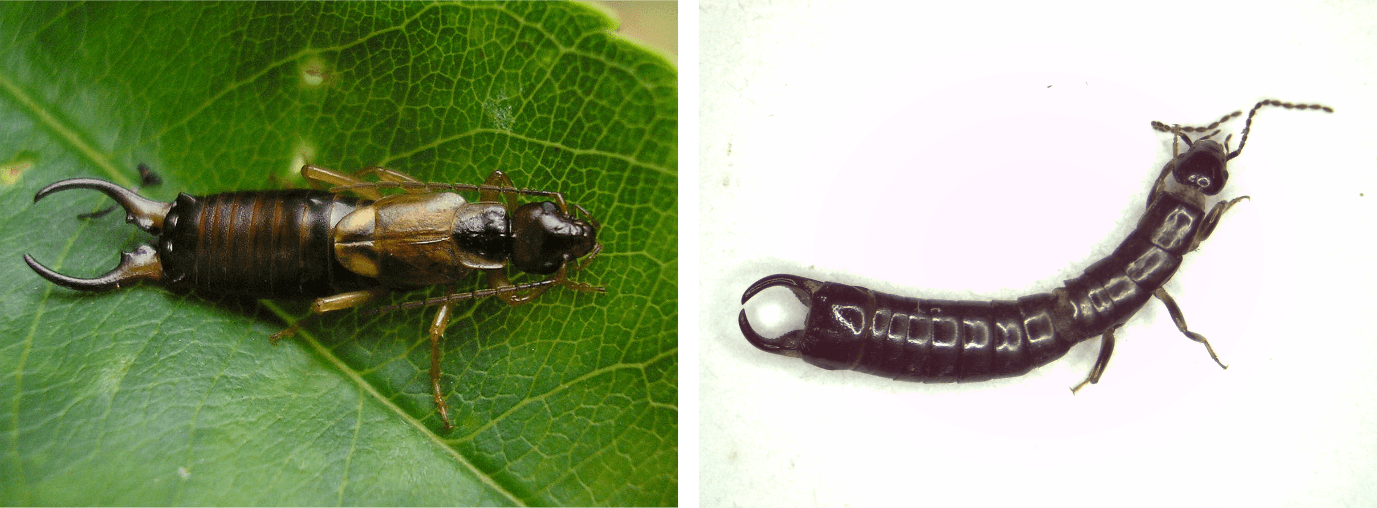
New open access paper: Morphological and molecular analysis of Australian earwigs (Dermaptera) points to unique species and regional endemism in the Anisolabididae family
Words and images: Oliver Stuart
Earwigs (Dermaptera) are a challenging group of insects to study. In Australia, earwigs are variously known as pests, predators of pests (so, beneficial insects), or both at once depending on the crop type and other particulars. The invasive Forficula auricularia (the European earwig) is the most common pest, but we also have an ensemble of native species which have a largely unknown status.
Because of this, we’re currently in need of detailed research to help us better manage these insects as agricultural actors. PEARG has recently concluded one such study on the earwig diversity of the southern Australian grain belt.
Our study was concentrated in agricultural settings like this wheat paddock. One of the trap types we used to catch earwigs were cardboard roll traps: rolls of corrugated cardboard that the earwigs use as shelter. The tendency of the earwig to seek out tight, confined spaces to crawl into can be used to trap them.
One family of earwigs, the Anisolabididae, are known to inhabit grain farms in southern Australia. Unfortunately, this family is known for the fact that most of its species look very similar. Molecular approaches can help us get around this issue.
Molecular approaches, using genetic information to estimate phylogeny (the earwig “tree of life”), have helped us make great strides towards a more comprehensive picture of earwig evolution. In our study, published in Insects, we used a combination of traditional measures and genetic approaches to study the Anisolabididae earwigs that are found in southern Australian grain production landscapes.
We started with a detailed collection of earwigs; two and a half years of samples from about forty sites across Western Australia, South Australia, Victoria, and New South Wales. Among them, we found unknown Anisolabididae species, and we used the available taxonomic literature to identify then, focussing on morphological traits (their physical structure) that differ between species.
Left: Forficula auricularia L., the European earwig, an invasive species in Australia that has been known to damage grain crops. Right: One of our Anisolabididae mystery earwigs. Important to note are the lack of wings and very uniform body segments. The rounded pincers of both the European earwig and the native Anisolabididae tell us that these are male earwigs.
One of the most important traits in earwig classification is the morphology of the male genitalia, funnily enough. This is a common theme in insect systematics.
Why genital morphology? Well, evolution is fundamentally about who gets to reproduce, and how much. It follows then that the more closely involved a trait is in reproduction, the faster it evolves. The result is that the genitalia of even very closely related species can show obvious differences, even when the different species might otherwise look identical.
This is exactly the case here; the unknown specimens fell into seven distinct species which looked very similar except for the morphology of the male genitalia. Paired structures known as the parameres provided clues to their classification. Another trait, the forceps (the familiar pinchy rear-ends of earwigs) was also useful, but only in some cases. Some species had identical forceps, but different parameres.
 Each pair of forceps (top) and paramere (bottom) photos shows the morphology of one of the species. Note that some species have very similar forceps but slightly different parameres. The differences can be extremely subtle and show variation even within species.
Each pair of forceps (top) and paramere (bottom) photos shows the morphology of one of the species. Note that some species have very similar forceps but slightly different parameres. The differences can be extremely subtle and show variation even within species.
Next, we extracted and sequenced DNA barcodes from our mystery earwigs. DNA barcodes are sequences from genes that, just like insect genitals, tend to evolve relatively fast. Closely related species that otherwise are very similar usually have distinct barcode sequences, allowing the use of genetic information to distinguish between them.
Our aim here was to test the morphological work we’d already done. While all available research suggests the utility of genital morphology to distinguish species, recent molecular work has uncovered some glaring errors in the existing earwig classifications. Do the unknown specimens fall into the same genetic groups as morphological groups?
Fortunately, they did. All of the groups distinguishable by morphology alone also clustered at the genetic level.
We also mapped the occurrences of the different species. The mystery Anisolabididae earwigs were only found in Western and South Australia, and the two states have mostly distinct communities. This isn’t uncommon for Australian insects; unique regional species are the norm. These earwigs, especially, tend not to move around a lot and can’t fly, which would make them more likely to diverge over time into separate species without intermixing.
Pie charts showing the relative proportions of the species at each site in Western (left inset) and South Australia (right inset). Each colour represents one species. One species was found throughout both states (Anisolabis sp. 1), the others were confined to one state. There was also spatial variation within states.
Remarkably, we found this diversity in agricultural areas. Land clearing and broadacre cropping are known to have negative effects on insect diversity. Given that we found unique and regional species even in these environments, it’s very likely that Australian earwig diversity in undisturbed habitats is greater than we thought.
One of the immediate benefits of the research is that it allows pest management and surveillance programs to quickly and efficiently distinguish the earwig species they find. This, in turn, allows us to develop a better picture of earwig diversity in Australia and assists with the ongoing management of insect communities in agricultural landscapes.

